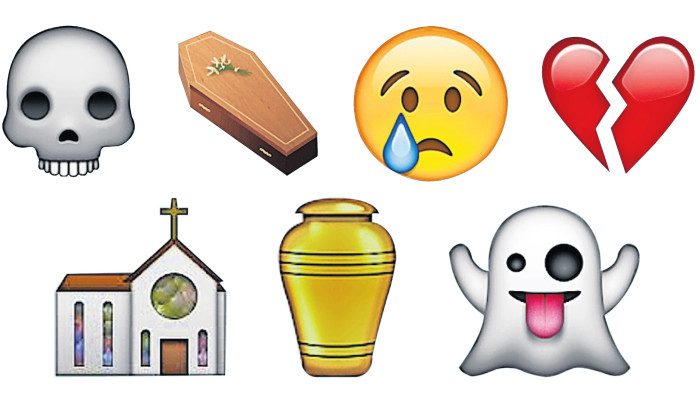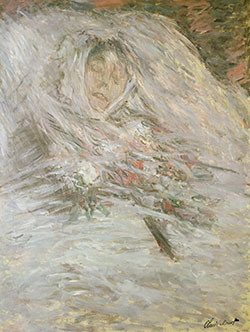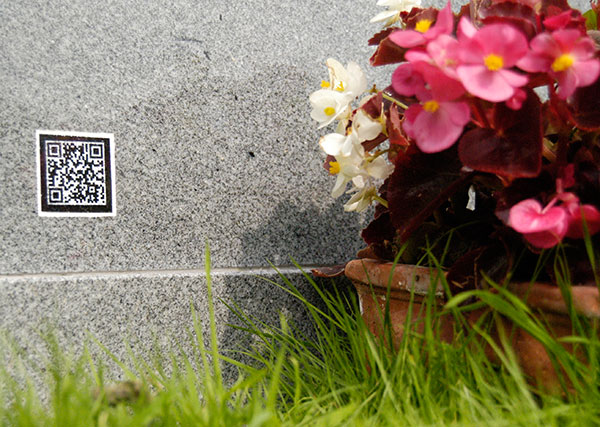Virtual mortality: what happens to our online selves when we die?

Simply sign up to the Life & Arts myFT Digest -- delivered directly to your inbox.
On March 19, Anna Sergeeva, a beautician working in Dubai, took a cheerful selfie from her seat on a plane that would crash in Russia a few hours later, killing everyone on board. She uploaded the photo to her social media profile, and the image has since circulated widely online. We see some of the outfit she chose for the flight: a comfortable light grey hoodie with a soft grey T-shirt to match. Her expression contains that archetypal selfie blend of coyness, good humour and subtle doubt.
Had the plane landed safely in Rostov-on-Don, the picture would have remained unremarkable. Instead, its very banality is frightening. Unexpected death rewrites the minor details. Sergeeva’s stray wisps of hair, the undulating purple and gold design on her upholstered seat, the shadows of strain in her neck as she braces for the camera flash — all of this seems, in retrospect, infused with the impossible knowledge of what was to come.
Such is the cultural dominance of social media, it is unsurprising that macabre moments are caught in the daily haul of uploaded images. In the 20th century, mortality and death were often shrouded, taboo subjects, at least in the west. Writing in 1993, Sherwin B Nuland, surgeon and author of How We Die, argued that “modern dying takes place in the modern hospital, where it can be hidden, cleansed of its organic blight, and finally packaged for modern burial”. But with the arrival of digital technologies, death is achieving new levels of exposure, both accidental and intentional. Today, death and dying have a proximity to everyday life that is particular to our networked culture.
Evan Carroll, marketing technologist and co-founder of the blog The Digital Beyond, which promises to help readers “predict and plan for the future of your online content”, suggests that there may be an emotional cost to these new ways of incorporating death into the midst of life. In a suitably digitised interview, he spoke to me on Skype. Easily accessible reminders of the death of loved ones, he suggests, “can actually be quite damaging to the healing process”. In an attitude counter-intuitive to the ethos of digital life, he proposes that “there is some advantage to being dead and gone as opposed to being dead and present”.

As a young child, the coverage of the 1986 Challenger disaster stunned me. I watched replays of the pronged coils of smoke seeping into the blue sky, followed by earlier scenes of the astronauts filing to the launch pad in their space suits. That procession is my earliest memory of witnessing people on the verge of death. I remember too the security camera footage of Diana, Princess of Wales and Dodi al-Fayed, played over and over again on the news, of the couple leaving the Ritz hotel in Paris in August 1997 and moving choppily towards their car. One of the most unforgotten moments of the 20th century was the JFK assassination: sunny shots of the cavalcade rounding the curve, waves and smiles turning to panic in one dreamlike instant.
These images entered the culture because of the prominence of the people involved. But with all of us now being both camera operators and our own publicists, we are more likely to capture the precariousness of life. One of the eeriest Wikipedia pages is “List of selfie-related injuries and deaths”. A sensational headline that “Selfies are more dangerous than shark attacks” gained public traction last year. Images of people taking selfies moments before death form a growing genre of viral internet content — digital memento mori which, as in the case of Sergeeva’s selfie, carry their own emotional demands on the viewer.
But perhaps more prevalent than the nightmarish death selfie is the increased conviviality of the deathbed. In 2013, an American radio journalist, Scott Simon, became one of the first digital chroniclers of death to gain a large following, live-tweeting the last few days of his elderly mother’s life from her Chicago hospital room. Here are some examples from Simon’s timeline:
“My mother drifts to sleep listening to Nat’s ‘Unforgettable’. I keep things light, but moments like this hard, if sweet.”
“City is cool, bright, & lovely this morning. My mother touches a splash of sunlight w/ her fingers. ‘Hello, Chicago!’ ”
“I know end might be near as this is only day of my adulthood I’ve seen my mother and she hasn’t asked, ‘Why that shirt?’ ”
Simon’s tweets are like brushstrokes, evoking his mother’s enduring humour and the atmosphere in the room. The result is an impressionistic portrait composed mainly of gaps and absences and hinting at a new digital art form, the unfolding present caught on the wing, at once highly crafted and improvised. Regardless of whether such chronicling conveys the reality of our most intense hours, social media does enhance the accessibility of the deathbed, allowing it to become a garrulous site of communication and digital interaction.
. . .
There has long been evidence of an artistic impulse to capture the details of death when it occurs. Several millennia since the earliest Egyptian death masks, the Impressionist painter Claude Monet could not help analysing the changing colours of his wife Camille’s skin after she died. This intense observation resulted in his 1879 portrait “Camille on Her Death Bed”. In our century, Annie Leibovitz photographed the corpse of her lover Susan Sontag, saying later that to do so seemed a natural extension of her artistic practice. The Scottish novelist John Niven wrote in a 2013 essay how his brother’s suicide immediately prompted him to shape it in words: “I excused myself from my mother and sister, who were weeping in each other’s arms, and went into the bathroom. I locked the door, sat down with my little Moleskine notebook, and recorded everything that had just happened: the angle of light from the window above the bed, the coiling pale blue lines of the monitors.”
Digital technologies encourage and democratise this artistic impulse, enabling any of us to document and disseminate moments of dying. And the various forms of social media give dying people a new sort of vitality. As I argue in my recent book on digital life, The Four-Dimensional Human, online communication allows terminally ill patients to express, to larger audiences than ever before, their experiences of the dying process. And since the internet is a disembodied medium, they can engage in social interactions that are not foregrounded by their physical frailty. Online life provides them with a robust presence in the world, deep into their decline.

Until she became too unwell, the political aide and activist Kate Gross, who documented her cancer experiences both online and in print, was an active participant in the conversation on how to engage with dying people and their families. The actor Leonard Nimoy, in the days before he died, was sharing poetry with his Twitter followers, as well as some final thoughts on the nature of life (“A life is like a garden. Perfect moments can be had, but not preserved, except in memory”).
Compare such vigour with the narrator Marcel’s attitudes towards his ill grandmother in Proust’s In Search of Lost Time (1913). Unable to surmount the physical signs of her impending death, he brutally describes how their gossip about family friends “assumed an air of being without point or occasion, fantastic, because they sprang from the nullity of this very being who tomorrow possibly would have ceased to exist, for whom they would no longer have any meaning, from that nullity, incapable of conceiving them, which my grandmother would shortly be.”
The idea of death is so alien for Marcel that it corrupts his relationship with his grandmother while she is still alive. She becomes, like the condemned person, sequestered from normal, everyday interactions, neither fully in the world nor fully outside of it.
Once death occurs, a similar marginality has often possessed the places where the dead are remembered. In the western cultural imagination, the graveyard is often depicted as a borderland between the living world and the unknowable realms beyond it.
One of the most famous graveyards in English literature appears in the shivery, twilit opening to Dickens’s Great Expectations (1861). The young boy Pip is visiting his dead parents and row of dead brothers in the churchyard, a “bleak place overgrown with nettles”. The barrenness of the surrounding landscape emphasises the graveyard’s eerie position at the forgotten edges of life.
Fast-forward to the intense connectivity of the 21st century, when even tombstones are expected to socialise. For increasing numbers of people, the grave site is yet another node in the network. An industry has even emerged to digitise the cemetery.

One such company in the UK is the Dorset-based QR Memories, which outfits tombstones and memorial plaques with a discreet cache of online data. QR or Quick Response codes are those little squares of psychedelic black and white that one scans with a smartphone to upload the information they contain, such as website URLs, email addresses, and plain text files.
Elizabeth Normandale, sales and marketing director at QR Memories, tells me that the motivation for QR codes on gravestones is linked to a wish that the deceased be known, beyond merely a name and a set of dates. “A QR code means that so much more information can be included, and a person who has died becomes a person who once lived,” she says.
While these codes can be “locked down”, restricting access to a selected group, all of Normandale’s clients so far have opted for them to be open to the public. “They want anyone who visits the memorial to be able to know more about the person being remembered there,” she says. “One client has a code with a video which shows the person who has died singing in a bar.” Here we find the primacy of information-sharing — one of the main features of digital life — reshaping our ideas of what it means to mark the lives of the dead.
Young Pip in his analogue churchyard could be the spokesperson for companies such as QR Memories. He doesn’t know what his late mother and father looked like, “for their days were long before the days of photographs”. To make do, he imagines their physical appearances from the scant information their graves offer him. The lettering on his father’s memorial evokes the image of “a square, stout, dark man, with curly black hair”, while the style of his mother’s inscription gives him the impression that she was “freckled and sickly”. The aloofness of the dead is destined to diminish as the linked-in cemetery, unimaginable to the Victorian mind, becomes increasingly integrated into the general busyness of digital life.
Evan Carroll notes how social media expands the scope of the memorial site, explaining that “bereavement and memorials are no longer confined to one place or one time”. Virtual grave sites such as Facebook’s specialised “memorial profiles”, requested by a user before death or by their family afterwards, allow public grieving to occur beyond the geographic and temporal limits of a wake or funeral.
The issue of who inherits access to our online profiles, as well as the password-protected data on our various devices, is of growing legal concern. Many experts, including Carroll, advise that we should specify in our wills how we want to bequeath the data that will outlast us. Increasingly, our digital profiles will, in death, be places of mourning, and so it behoves us to account for them as part of our estates. Carroll raises the idea of “communal bereavement’, whereby a social network profile dedicated to the deceased provides an ongoing, dynamic place for commemoration. In this way, he suggests “the role that the deceased plays in the social network continues after they pass away”, since they can facilitate online interactions between people who otherwise would not have known one another. As Carroll puts it, “You can introduce them from beyond the grave.”
One of the core values of the digital age is “presence”, the connectedness and visibility that comes from active participation in online life. It’s understandable, then, that dying no longer necessitates a withdrawal from sociability, nor is death tethered securely to the idea of absence. In Tom McCarthy’s recent novel Satin Island, the narrator muses that one could achieve a kind of afterlife by organising a series of messages to be sent intermittently after one’s death: “Key to immortality: text messaging.”
This prospect is perhaps not especially far-fetched. A company called Eternime is already offering us “virtual immortality” in the form of an interactive avatar, which can communicate, like an uncanny Sybil, our “memories, stories, and ideas” down the digital generations. The prospect of enduring as data is one of the more spectacular ways in which digital life is reformatting mortality in its own image. Even in death, it seems, we will find it steadily more difficult to go offline.
Laurence Scott’s ‘The Four-Dimensional Human: Ways of Being in the Digital World’ is published in paperback by Windmill on May 5
Photographs: CEN; Bridgeman Art Library
Comments